Georges Brezol: “Turks Have Passed Here...”
23.12.2010

Armenian Genocide Museum-Institute of NAS RA reprinted the rare monograph of Georges Brezol “Turks Have Passed Here…”. The book is a valuable source on the Armenian massacres in Adana in April, 1909. It contains unique documents, testimonies and photographs concerning Adana massacres of 1909. The documents included in this book help us to orientate in different interpretations concerning the Cilician massacres perpetrated before and after the Young Turks’ coup. The monograph published by Georges Brezol is the only documentary publication dedicated to the historiography of Cilician massacres, which allows us to have a notion about the massacres organized in Cilicia and adjacent regions confronting various primary sources.
The book for the first time was published in Paris, 1911. The monograph is the second edition of the “Cilician Series of Books” sponsored by Ralph Yirikian, executive Director of VivaCell-MTS.
International Conference on the Prevention and Condemnation of the Crime of Genocide
15.12.2010
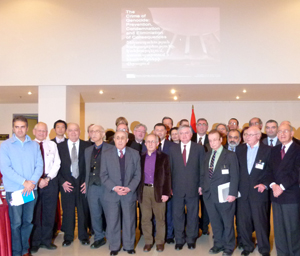
On December 14-15, 2010, The Ministry of Foreign Affairs of RA in cooperation with the Armenian Genocide Museum-Institute organized an international conference titled “The Crime of Genocide: Prevention, Condemnation and Elimination of Consequences”.
The Minister of Foreign Affairs Edward Nalbandyan opened the conference and a follow –up speech was delivered by the President of RA Serzh Sargsyan: “Today, more than ever, it is necessary to take serious steps and develop efficient mechanisms for the prevention of genocides. And today, more than ever, the impunity of different political administrations and states, which have committed the crime of genocide, absence of international condemnation, lack of adequate mechanisms or their ineptitude created a situation when the mankind, along with other grave challenges, still faces the threat of new genocides.
Bitter lessons of the Armenian Genocide are not just memories in the history of the world: they were amplified by the horrors of the Holocaust, genocides in Rwanda, Darfur and many other tragedies. Unfortunately, genocide denial and oblivion are still present in our world. Political expediency and short-sighted timeserving often prevail over the necessity to adopt and implement sound and reasonable decisions.”
The Prominent Genocide Scholars in Tsitsernakaberd Memorial Complex
15.12.2010

December 15, 2010 the participants of the international conference “The Crime of GENOCIDE: Prevention, Condemnation and Elimination of Consequences”.
organized by the Ministry of Foreign Affairs of RA in cooperation with the Armenian Genocide Museum-Institute visited Tsitsernakaberd Memorial Complex. The guests put flowers at the eternal fire of the Armenian Genocide victims and honored their memory with a minute of silence.
Afterwards, the representatives of the international delegation visited the Armenian Genocide Museum and took a guided tour of the museum exhibition. The scholars from the different parts of the world planted a fir at the Memorial Alley of Tsitsernakaberd Complex in memory of the Armenian Genocide victims.
"AZERBAIJAN: VANDALISM AS USUAL"
09.12.2010

The Armenian Genocide Museum Institute has published the illustrated book “Azerbaijan: Vandalism as usual” by Hayk Demoyan, which describes the barbaric demolition of the Armenian cemetary in Old Jugha in December 2005 implemented by the Azerbaijan army.
In December 2005 the soldiers and officers of the Azerbaijan army entirely demolished thousands of unique cross-tones and tombstones in the Armenian cemetary of Old Jugha completing the state policy of destroying the Armenian Christian heritage in Nakhichevan and Azerbaijan territories within the last two decades.
During these vandalistic activities the Armenian medieval cross-tones and tombstones of Old Jugha were turned into mass and thrown into Arax River. At present the shooting-range has been constructed on the territory of the cemetary.
“Yes, Mr. Davutoğlu, but…” by HAYK DEMOYAN
03.12.2010

Yes, Mr. Davutoğlu, I fully agree with you that many things have changed in the Turkish society and the “tragic events” of 1915 are now on the agenda for public debates, but one may ask why those events have been denied and still it is hard to believe that all denialist documents and publications on the web site of the Foreign Mministry of Turkey will soon be removed. Let me guess: perhaphs Turkey needs another decade for proper facing with its own history without new and old taboos, syndromes and complexes.
Yes, Mr. Davutoğlu, while speaking about the causes of implementation of state-planned and orchestrated policy of Genocide against Armenians and other Christian minorities one can blame for intensification of nationalist movements in the fall of the Ottoman Empire, but let me ask why the killer of Hrant Dink, who was shot dead in January 2007, was treated as a hero in the police station and no one has been sentenced so far? Why are the Armenians living in Anatolia still afraid of expressing their real identity? That’s because of… I believe that you are well aware of the answer since the next question I would like to raise in this regard is the “unknown” nationalism which is responsible for the destruction of more than 3000 early Christian Armenian monuments dynamited or used as target during the tank exercises in 1960s and 1970s i. e. during the period of republican Turkey.
Executive Director of VivaCell-MTS, Ralph Yirikian’s Donation to the Armenian Genocide Museum & Institute
31.11.2010

As part of the comprehensive efforts to have the crime committed in the beginning of the 20th century recognized and condemned, the library of the Armenian Genocide Museum-Institute has been enriched with rare literature of high scientific interest owing also to the efforts made by Armenia’s Leading Mobile Operator. These volumes – major sources of testimony by eyewitnesses to massacres – are brought from a number of countries and are the voice of both the Armenian nation and the whole civilized world against the crimes committed against humanity.
In particular, the “Letters from Cilicia” by Alice Keep Clark, an American missionary, is a unique primary source of the massacres of Hatchn in 1920.
With VivaCell-MTS support the funds of the library are now enriched with around 200 pieces of museum and exhibition items.
Ralph Yirikian came up with a personal initiative to enhance the collection of the Armenian Genocide Museum-Institute. The idea to create the Cilician series is part of that initiative. The rare monograph by Ferriman Duckett “The Young Turks and the Truth about the Holocaust at Adana”, the first edition of which appeared in London in 1913, is already reprinted.
Karel Hansa - 120
25.11.2010

Czech traveller and writer Karel Hansa was born on November 25, 1890, in Vienna. In 1919 he moved to Prague. In 1922 he travelled around the countries of the Near East. From Istanbul he took a trip to Smyrna (Izmir), Beirut and Aleppo where he witnessed the miserable conditions and the sufferings of the Armenian refugees living in the streets and tents. It was in Aleppo that he first learnt about “Near East Relief” association. He was inspired by their humanitarian activity and joined the program to transfer eight thousand Armenian orphans to Syria.
Later Hansa left for Lebanon where he visited the Danish orphanage and met Maria Jacobsen. At the end of 1922 he returned to Europe by the same ship which was carrying 896 Greek orphans to Athens. He was deeply disheartened by the horrifying scenes he witnessed in the Near East. Hence upon his return to homeland he set up “Armenian Orphans’ Relief Foundation of Hansa” which operated adjacent to the Czechoslovakian Red Cross. In 1923 he published the book titled “The Horrors of the East” in which he speaks about the Armenian history and culture: Hansa states the anguish of the Armenian orphans and widows in consequence of the Genocide.
The Mayor of Montreal Gerald Tremblay laid a wreath
at the memorial of the Armenian Genocide victims
29.10.2010

The Canadian delegation headed by the Mayor of Montreal Gerald Tremblay visited Tsitsernakaberd Memorial Complex of the Armenian genocide in the framework of a state visit in Armenia and laid a wreath at the memorial of the Armenian Genocide victims. The members of delegation also put flowers at the eternal fire and honored their memory with a minute of silence.
Afterwards, the Canadian delegation visited Armenian Genocide Museum where Mr. Tremblay left a note in the commemoration book
The Secretary General of the Council of Europe in Tsitsernakaberd
22.10.2010

On 21 October, the CoE delegation headed by of Mr. Thorbjørn Jagland, the Secretary General of the Council of Europe, visited Tsitsernakaberd Memorial Complex of the Armenian Genocide and put flowers at the eternal fire and honored victims’ memory with a minute of silence.
Western Armenian Education
19.10.2010

In the 19th century, especially after the ratification of the national constitution, the Western Armenians began to embark upon regulating and developing their domestic life in spite of the existing numerous obstacles and prohibitions. Permission for building Armenian educational and cultural institutions was acquired with great difficulty.
The first Armenian schools in the Ottoman Empire were established in the 1790s; this work was especially organized by the income of the church, or through the efforts, and on the initiative of, the Armenians in Constantinople. In 1866 there existed over 46 Armenian schools (32 males and 14 females) with 4,700 pupils including 1,472 school girls and 142 teachers. From the middle of the 19th century unisex colleges were opened in all the provincial centers and villages of Western Armenia.
A number of educational and cultural associations were formed on the initiative of the Armenian progressive youth who supported this work greatly. The main aim of these institutions was the foundation of schools and the dissemination of education and enlightenment in different Armenian districts.
Members of Armenian Relief Society in Tsitsernakaberd
12.10.2010

The representatives of the Armenian Relief Society’s offices of 26 countries of the world within the framework of the 100th Anniversary of the Armenian Relief Society (HOM, ARS) visited Tsitsernakaberd Memorial Complex of the Armenian genocide and laid a wreath at the memorial of the Armenian Genocide victims. The crowded delegation put flowers at the eternal fire and honored their memory with a minute of silence giving a requiem of liturgy.
Afterwards the heads of the Armenian Relief Society’s offices planted a fir at the Memorial Alley and a mass tree planting was organized in the Tsitsernakaberd park area.
Slovenian President Pays
Tribute to Armenian Genocide Victims
11.10.2010

Slovenian President Danilo Türk and his spouse Barbara Miklic Türk visited Tsitsernakaberd Memorial Complex of the Armenian genocide in the frame of a state visit and laid a wreath at the memorial of the Armenian Genocide victims. They also put flowers at the eternal fire and honored their memory with a minute of silence.
Afterwards, Danilo Türk visited Armenian Genocide Museum and left following note in the commemoration book. “I am deeply waved by the memory of one of the most heinous crimes of the 20th century and the entire history of humankind. Let the history from now on be different. History must never repeat itself in this worst image”.
The Slovenian President planted a fir at the memory park of Tsitsernakaberd Complex.
A Liturgy and a Protest Rally at Tsitsernakaberd
22.09.2010

On Sept 19, Armenian Genocide Museum-Institute and «MIASIN» youth movement, initiated a liturgy followed by a protest rally at the Armenian Genocide Memorial in Yerevan. Protestors condemned the Turkish Government for publicity stunts over Surb Khach Church on the island of Akhtamar.
A crowded procession; representatives of public organizations, government agencies, ordinary Armenian citizens and representatives of ethnic minorities attended the protest rally and began to climb to Tsitsernakaberd Memorial complex, - carrying banners, “Do not give us our church for rent” and “Turkey comply with your international obligations” and shouting the word “shame”.
In memory of victims of the Armenian Genocide was served a liturgy, which began at the same time with the liturgy held in Surb Khach (Saint Cross) Church on Akhtamar Island in Turkey.
Akhtamar and Turkish state identity
17.09.2010

The second Akhtamar ceremony this time as a one-day religious ceremony is scheduled for September 19, 2010. It could be regarded as a state orchestrated show or more correctly a farce. Official Ankara generously allowed a religious performance for one day only on Sept. 19, 2010 and a cross will be placed on the dome of this 10th century Armenian temple located on the small island of Van lake.
We all remember March 2007 ceremony, when Turkey initiated the series of informational flows around the restoration of the Akhtamar church and launched a shameful tradition of turning Christian churches into museums with a purpose to earn money from expected tourist flows. The fate for the rest of Armenian and Greek Christian heritage in Turkey is if not to be destroyed fully then to be converted into a prison, a mosque, a bath, sporting hall, or a good stone material for construction work.
The opening ceremony of the Akhtamar Holy Cross temple after the restoration heavily was staffed with Turkish flags and portraits of Ataturk. It was not allowed to erect a cross on the dome of the Christian church, but the Turkish flags with a symbol of Islam were attached to the temple walls. Gagik Artsruni, the Armenian king of Vasuprakan-Van kingdom and his chief architect Manuil never expected that one day Turkish flags will be used as a decoration of the temple and Ataturks face will welcome all visitors. What about if next time Turkish government decides to restore an old Armenian bathhouse, for example in Ani capital?
FRANZ WEFREL - 120
10.09.2010

Franz Werfel, an Austrian writer and humanist, was born on Sept. 10, 1890, in Prague, Austro-Hungarian Empire. He studied at the universities of Prague, Leipzig, and Hamburg. After service in World War I (1915-1917) he was already a world known professional writer.
The famous writer Franz Werfel died in Beverly Hills, USA in 1945. Afterwards his body by the initiative of a grateful group of Armenians was returned in 1975 to Vienna.
The literary contribution of Franz Werfel is based on the principals of peace and brotherhood.
“The Forty Days of Musa Dagh” (1933) has its specific place in the works of Austrian-Jewish author Franz Werfel. This novel concerns the 1915 struggle of the region Suedia in Cilicia during the Armenian Genocide, when the local people were fighting back and defend themselves for 53 days. The novel is a fictionalized account based on the real-life defense of Musa Dagh's Armenians who were facing systematic deportations and massacres ordered by the Young Turkish government.
President of RF paid a tribute of respect in a memory of the innocent victims
19.08.2010

On August 19, by the invitation of President Serzh Sargsyan, President of the Russian Federation Mr. Dmitry Medvedev arrived to Yerevan on a state visit. The leader of RF visited Tsitsernakaberd Memorial Complex of the Armenian genocide, laid a wreath at the memorial of the Armenian Genocide victims and also put flowers at the eternal fire and honored their memory with a minute of silence. Afterwards Mr. Medvedev watered the fir, which has been planted by him at the Memory Alley two years ago.
The national anthem of the Russian Federation was heard at the Tsitsernakaberd hill. The Director of the Armenian Genocide & Museum Institute Hayk Demoyan presented to the Russian President the history of construction of the Tsitsernakaberd Memorial Complex, its importance for Armenians, who usually visit, and the meaning of April 24.
The Resolution by the State Duma of the Russian Federation (On April 14, 1995) condemns the perpetrators of the extermination of Armenians from 1915 to 1922; and recognizes April 24 as a Remembrance Day for the victims of the Genocide.
Polish Foreign Minister in the Armenian Genocide Memorial Complex
14.07.2010

The Polish delegation by the head of Polish Foreign Minister Radoslaw Sikorski, visited Tsitsernakaberd Memorial complex and laid a wreath at the monument of the Armenian genocide victims. Afterwards the delegation took a tour in the Armenian Genocide Museum and Foreign Minister left a note in the Commemoration Book. Mr. Radoslaw Sikorski planted a fir at the Memorial Alley.
The ombudsman of Israel visited Tsitsernakaberd
13.07.2010

The delegation headed by Judge Micha Lindenstrauss, State Comptroller and Ombudsman of Israel had a private visit to the Tsitsernakaberd Memorial complex and put flowers at the monument of the Armenian genocide victims.
Afterwards the delegation took a tour in the Armenian Genocide Museum.
"SONG WINS BABE FROM TURK": A story of a child’s life
13.07.2010
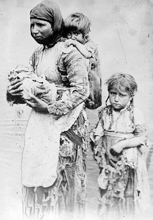
One of the tragic episodes of the Armenian Genocide is the forced Islamization and Turkification of the Armenian children and women. In this case they got an opportunity to survive, but being in the Moslem environment it was impossible-especially infants quickly lost their identity. During 1920s thanks to the efforts of League of Nations, different organizations and individuals it was possible to release part of them from the captivity, but little of them could find their parents. Many of the persons, who devoted their life to this orphan rescuing work, were fell victim by the Moslem owners, who captured those children. This too emotional story was published on the front page of the American Red Cross Bulletin, when the Armenian mother could attract the attention of her lost child singing Armenian lullabies for her and testifying her Armenian identity and the fact, that she was her child.
The publication is presented totally and without any shortening.
US Secretary of State Hilary Clinton visited Tsitsernakaberd memorial complex
05.07.2010

The official delegation headed by the US Secretary of State Hilary Clinton visited Tsitsernakaberd memorial complex of the Armenian genocide victims. Secretary of State Hilary Clinton laid a wreath at the memorial of the Armenian genocide victims and honored the memory of them with one minute silence at the eternal flame.
Director of the Armenian Genocide Museum-Institute Hayk Demoyan briefed US Secretary of State on the history of the construction of Armenian genocide memorial and the humanitarian response of the United States and American people to destitute victims of the Armenian genocide.
The Secretary of State was informed also about the burials of the Armenian martyrs fallen during the self-defense fighting in Karabagh but buried in Tsitsernakaberd as a sign of continuity of the genocide in the Armenian popular memory.
AGMI identified new unknown photo documents on Armenian genocide
01.07.2010

The collection of the visual archive materials on the Armenian genocide was enriched with new revealed photos. This discovery was made in one of Armenian archives and depicts the scenes and traces of horrible massacres in the region of Yerznka (modern day Erzincan) and Khnus. The high quality original photos were attached to the handwritten memories of the Armenian genocide survivor. The texts on the back of photos give the explanations on the geographical places they were taken and explanatory text of the eyewitness. The level of decomposition of the bodies of the victims and snow in the pictures show that they could be dated to the second half of the 1915 and the beginning of the 1916, the time when Russian troops advanced in the frontline, which enable for some Russian military photographers and Armenian reporters took photos of those scenes.
Georgetown’s Farmhouse of the Armenian Orphans as a historical-cultural building
30.06.2010

Between 1923 and 1927 more than 138 Armenian children, who were orphaned during the Ottoman systematic genocide against the Armenians, were brought to Canada, Georgetown by the Armenian Relief Association. Thanks to the efforts of the Armenian National Committee in Toronto Georgetown Farmhouse was recognized as a historic site. On June 26, 2010 the official opening of the special demonstration board of this farmhouse was taken place in the presence of His Holiness Aram I, where he mentioned that the Armenian cause is the cause of the whole world and humanity, which is addressed to prevent genocides in the world.
The Armenian Red Cross - 100
26.06.2010

This year we commemorate the 100th anniversary of the Armenian Red Cross. The organization began its activity in the first decade of the 20th century and became the first women’s society in the Armenian reality. The Armenian Red Cross has had a greatly and significant role in the Armenians’ life, especially a relief acts address for Genocide survivors.
In 1904, when Hay Heghapokhakan Dashnaktsutiun(Armenian Revolutionary Federation) party was involved in organization of Sasun uprising, the political activity of the Armenian women began in the U.S.A. Groups of women were gradually involved in committees of Hay Heghapokhakan Dashnaktsutiun acting in the U.S cities.
Federal Minister for European and International Affairs of Austria Michael Spindelegger visited Tsitsernakaberd
26.06.2010

The delegation headed by Federal Minister for European and International Affairs of Austria Michael Spindelegger visited Tsitsernakaberd Memorial complex and laid a wreath at the monument of the Armenian genocide victims.
Afterwards the delegation took a tour in the Armenian Genocide Museum, where Michael Spindelegger left a note in the Commemoration Book. Michael Spindelegger planted a fir at the Memorial Alley.
The musical culture of the Ottoman Armenians' before the Genocide
23.06.2010

Early in the 19th century the heterogeneous society of the Ottoman Empire did not have regulated musical and concert life yet; there were no professional composers and performers. In the musical culture orally transferred folk and gusan (“minstrel”) music was dominating.
The first Western Armenian musical bands were established in the beginning of the 19th century by composer and director Karapet Papazyan, who was the organizer and head of the first Armenian theatrical orchestra in Constantinople. He had such a prominent role in the musical life of Constantinople that he was frequently being invited to direct orchestras composed of European musicians during the European-style performances. Thanks to Papazyan’s activity the role of the musical art considerably increased in the Ottoman, especially in Western Armenians’ societies.
French parliamentarians visited Tsitsernakaberd Memorial complex
11.06.2010

The French parliamentarians’ delegation of the French National Assembly visited Tsitsernakaberd Memorial complex and put flowers at the monument of the Armenian genocide victims.
Afterwards the delegation took a tour in the Armenian Genocide Museum.
The Italian delegation paid tribute of respect
05.06.2010

The Italian delegation headed by the chairman of the provincial council of Milan Bruno Dupei visited Tsitsernakaberd Memorial complex and put flowers at the monument of the Armenian genocide victims.
Afterwards the delegation took a tour in the Armenian Genocide Museum and left a note in the Commemoration Book. Bruno Dupei planted a fir at the Memorial Alley.
The delegation headed by Minister of Foreign Affairs of Argentina Khorkhe Tayana visited Tsitsernakaberd
21.05.2010

The delegation headed by Minister of Foreign Affairs of Argentina Khorkhe Tayana visited Tsitsernakaberd Memorial complex and laid a wreath at the monument of the Armenian genocide victims.
Afterwards the delegation took a tour in the Armenian Genocide Museum, where Khorkhe Tayana left following note in the Commemoration Book. “I deeply bend down before the memory of the Armenian genocide victims”. In memory of the Armenian Genocide victims Khorkhe Tayana planted a fir at the Memorial Alley.
Greek community pays tribute of respect
19.05.2010

On the occasion of the massacre of Pontian Greeks the Greek community of Armenia and Ambassador Extraordinary and Plenipotentiary of Greece to Armenia Ionise Carintios visited Tsitsernakaberd Memorial complex and laid wreath to the memorial of the Armenian Genocide victims. Afterwards Ambassador Carintios visited Armenian Genocide museum.
During the atrocities committed by the Turks against 700 thousand Greeks in Pontus from 1916 to 1923 approximately 353 thousand fell victims, the other part took refuge in Greece, Armenia and other countries.
The delegation headed by pilot and spaceman Alexey Leonov visited Tsitsernakaberd
19.05.2010

The delegation headed by pilot and spaceman Alexey Leonov visited Tsitsernakaberd Memorial complex and laid a wreath at the monument of the Armenian genocide victims. Among other members the delegation also comprised Victor Gorbatko and Vladimir Lyakhov. Afterwards the delegation took a tour in the Armenian Genocide Museum and Alexsey Leonov left following note in the Commemoration Book. “No beast can devise crime more horrible, than the genocide against the ancient people perpetrated by the Ottoman Empire. It was the beginning of crimes committed in different parts of the globe. As long as humanity exists it should be condemned in all countries of the world regardless of the leaders and legal assessment should be given to it as a terrible crime against humanity”. The delegation planted a fir at the Memorial Alley.
Czech PM Jan Fischer visited Tsitsernakaberd Memorial complex
18.05.2010
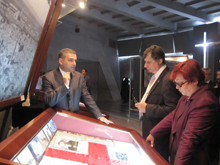
The delegation headed by Czech PM Jan Fischer visited Tsitsernakaberd Memorial complex and laid a wreath at the monument of the Armenian genocide victims.
Afterwards the delegation took a tour in the Armenian Genocide Museum, where Jan Fischer left following note in the Commemoration Book. “I was deeply impressed by all what I have seen in the museum, and by what happened of the beginning of the 20th century. We should never forget it”. In memory of the Armenian Genocide victims Jan Fischer planted a fir at the Memorial Alley.
Public lecture by Alex Hinton and Sargis Shahinian in Armenian Genocide museum-institute
15.05.2010

Public lecture by Alex Hinton and Sargis Shahinian took place in Armenian Genocide museum-institute. Sargis Shahinian, a chairman of “Switzerland-Armenia” Association was one of the initiators of the process of official recognition of the Armenian Genocide by Switzerland in December 2004 and as well an initiator of process of making its denial criminally pursuing. In his talk Mr.Shahinian touched upon the recent developments around Armenian-Turkish protocols.
The second lecturer, Alex Hinton, who is Executive director of the Center for the Study of Genocide and Human Rights and Professor of Anthropology and Global Affairs and at Rutgers University, Newark and the First Vice-President and Executive Board member of the International Association of Genocide Scholars, made a presentation on the motives of genocide perpetrators.
“International Association of Genocide Scholars” and “Suisse-Armènie” Association received a Presidential Prize 2009
13.05.2010

The awarding ceremony for “President’s Prize 2009” sponsored by “´Boghossian” foundation took place in the residence of the president of RA.
By the decree of the President Serzh Sargsyan, The International Association of Genocide Scholars (President William A. Schabas, Ireland) received an award for its academic activities advancing knowledge of the Armenian Genocide and countering its denial. The Association “Suisse-Armènie” (President Sarkis Shahinian, Switzerland) received presidential award for its activities leading to the official recognition of the Armenian Genocide and to the penalization of its denial in Switzerland.
The International Association of dentists visited Tsitsernakaberd
01.05.2010
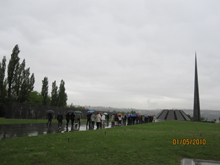
On May 1, the International Association of dentists from over a hundred countries arrived in Armenia. The delegation visited Tsitsernakaberd memorial complex and put flowers at the monument of the Armenian genocide victims.
Afterwards the delegation took a tour in the Armenian Genocide Museum and left a note in the Commemoration book.
A ceremony of tribute at Tsitsernakaberd memorial
24.04.2010

Today is the 95th anniversary of the Armenian genocide. Every year on April 24 hundred thousands of Armenians from Armenia and Diaspora march to Tsitsernakaberd Memorial Complex to remember innocent victims of Armenian Genocide.
President of Republic of Armenia Serzh Sargsyan, Prime Minister Tigran Sargsyan, the Supreme Patriarch of all Armenians His Holiness Garegin II, members of parliament and government of the Republic of Armenia, representatives of the foreign diplomatic missions paid tribute and lay flowers at the eternal fire. His Holiness Garegin II, Catholicos of All Armenians conducted a special church service for the repose of the victims’ souls.
15th anniversary of the Armenian genocide museum-institute
23.04.2010
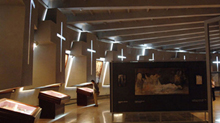
This year is the 15th anniversary of the Armenian Genocide Museum-Institute (AGMI). The museum-institute was founded in 1995 when the permanent exhibition of the museum was opened. The fifteen years activities of the museum are aimed at increasing the knowledge on the Armenian Genocide which in its turn greatly contributes to the ongoing worldwide process of the recognition and condemnation of the Armenian Genocide. During this period the museum continues its mission which is scholarly research of the Armenian Genocide problems and their introduction to a local and international audience through permanent and temporary museum exhibitions.
Sarkis Torossian: an Armenian hero of Dardanelle
23.04.2010

Captain Sarkis Torossian was born in 1891 in the Armenian populated city of Everek, which is situated in the south central part of the Turkish Empire. He graduated from the local Armenian Parochial School and from his early years was imbued with the desire to become a soldier, a career strictly forbidden to Christian subjects by Ottoman Turkish laws before the constitution of 1908.
Sarkis Torossian was accepted the State College in Adrianople, where he became friends with a young Arab fellow named Muharrem, son of the Brigadier General of Constantinople. Torossian was accepted through this friendship into Muharrem’s home as a close friend of the family and Muharrem’s father, powerful Pasha, secured an appointment for both boys to the Military College. During many weekend visits to the Pasha’s palace, Sarkis’ romance with Muharrem’s sister Jemileh was kindled.
AGMI revealed unknown new photos on the Armenian genocide
23.04.2010

Recently the search efforts of the AGMI resulted in finding new photo documents on the Armenian genocide. One of them was found in the handwritten memoir from the collection of the Armenian National Archives. The photo depicts a scene from the deportation camp of Ras-ul Ayn in the Syrian Desert. It is dated 1915 or 1916 and judging from the position it was taken, most probably it was taken from a hidden place or the person who took it tried to hide the very moment of taking photo. A part of the Armenian concentration camp in Ras-ul Ayn is possible to see in that photo with tents and belongings of deportees. There is an inscription on the bottom of the photo which says “A caravan of Armenian deportees at Ras ul-Ayn.”
95 trees planted in the Memorial alley of Tsitsernakaberd
22.04.2010

On the occasion of 95th anniversary of the Armenian Genocide, the FPWC along with Viva Cell-MTS and the Armenian Genocide Museum-Institute organized a tree planting in Memorial Alley of the Armenian genocide memorial. 95 transplants brought from the Western Armenia made a symbolic adding to the alley.
Those, who gathered together to participate in the tree planting event, tied a belt on a trees reading “I Remember.” The Executive director of Viva Cell-MTS Company Ralf Yirikyan, the directors of AGMI and FPWC Hayk Demoyan and Ruben Khachatryan, as well as the vicar of the Araratyan Patriarchal Diocese, Archbishop Navasard Kchoyan took part in this tree-planting.
Armenian genocide: frontpage coverage in the foreign media
22.04.2010

Today the Armenian Genocide Museum opened a temporary exhibition “Armenian genocide: frontpage coverage in the foreign media”. The exhibition comprises over 70 Russian, Italian, French, American and British original newspapers and magazines dating to 19th-21th centuries, which covered the issues related to the Armenian massacres and Armenian question on their frontpages.
The exhibition was organized by the generous support of Tigran Kalaydjian from Cyprus who supported the collection named after Petros and Aram Kalaydjians. The materials of the Armenian Library and Museum of America also were included in the exhibition.
An international conference on cultural genocide
21.04.2010

On April 20, 2010 an international conference on cultural genocide was organized by Armenian Genocide Museum and Institute and Ministry of Diaspora of RA in Yerevan.
The participants contributed speeches, which presented the policy of cultural genocide of the Armenian cultural heritage, perpetrated by the governments of the Ottoman Empire and Republican Turkey in Western Armenia and other Armenian populated territories as well as tried to give a legal-political evaluation for this process.
AGMI website registered 300.000 visitors
19.04.2010

On April 19, 2010 by an interesting turn of chance a visitor from Turkey became the 300.000th visitor of the Armenian Genocide museum’s website since its launching in 2008. Within a short period of time the AGMI website has become one of the most important informative sources in the research and representation of various visual and textual materials related to the Armenian Genocide. The most frequent visitors are from the US and Turkey.
The main task and mission of the AGMI’s website is to disseminate unknown and newly found information on the Armenian Genocide. In fall 2008 in the third annual Pan-Armenian website competition which was held under the high patronage of the Armenian Prime Minister the official website of the Armenian Genocide Museum-Institute (AGMI) received the Grand Prix. AGMI also was nominated as a winner in the “E-Science” category. For the future AGMI plans the extension of its electronic policy adding new pages and enriching contents focusing on the development of genocide education project.
The kindergartens of Western Armenia
18.04.2010

In the 19th century, especially after the ratification of the national constitution in 1863, the Western Armenians began to embark upon regulating and developing their domestic life in spite of the existing numerous obstacles and prohibitions. Permission for building Armenian educational and cultural institutions as well as kindergartens was acquired with great difficulty.
The first Armenian kindergarten was established in Kadi Gyugh in the Ottoman Empire (a quarter in Constantinople) between 1888 and 1889 on the initiative of pedagogue Gayané Madakian, who had arrived from Eastern Armenia. Thanks to her persistent efforts, soon a great number of similar institutions were founded in different quarters of Constantinople, and in many Armenian-inhabited localities of Western Armenia and the Ottoman Empire.
AGMI obtained unique documents on American Near East Relief
17.04.2010

In 2009 the Armenian Genocide Museum-Institute obtained newly found unique materials concerning the humanitarian activities of American Near East Relief organization.
In early September, 1915 the American Ambassador in the Ottoman Empire Henry Morgenthau urged US State Department the formation of a committee to raise funds and provide ways and means for saving the Armenians.
Since October 1915 Armenian Relief Committee started the organization of fundraising. In November, 1915, two more committees operating in the Near East united with Armenian Relief Committee and formed the American Committee for Armenian and Syrian Relief, which later was incorporated as the Near East Relief by the Charter of the U.S. Congress, on August 6, 1919.
Memorial events organized by the Armenian genocide museum-institute on the occasion of the 95th anniversary of Armenian genocide
16.04.2010

The Armenian Genocide Museum-Institute organizes several memorial events in occasion of the 95th anniversary of the Armenian Genocide.
On April 20 the Armenian Genocide Museum-Institute and the Ministry of Diaspora of the Republic of Armenia organize an International conference on the subject of the cultural genocide. The main aim of this conference is to discuss the continuing policy of the mass destruction of the Armenian Christian cultural heritage in the Ottoman Empire and in the territory of the modern Turkish Republic, as well as to represent its ideological, political and cultural motivations and its consequences for human civilization.
Historians specialized in cultural genocide from the Republic of Armenia, Great Britain, Hungary, and Netherlands will bring their participation the conference.
AGMI director’s presentations in the Eastern cost of the USA
15.04.2010

On April 2-12 the director of AGMI Hayk Demoyan toured in the Eastern cost of the US with public lectures on the current activities of the AGMI, focusing on the memorable events for commemoration of the centennial anniversary of the Armenian genocide.
More than 100 members of the men’s club at Boston’s St. James church attended the presentation of Hayk Demoyan. The presentation of the recent books printed by the AGMI took place in the Armenian library and museum in Watertown. Another lecture on the AGMI activities was presented in the “Gallery Z” in Providence, Rhode Ireland, with the participation of local Armenian community members. On 8-10 April, 2010 AGMI director participated also in the workshop “State of the Art of Armenian Genocide Research; Historiography, Sources and Future Directions” at the Strassler Center for Holocaust and Genocide Studies at Clark University, Worcester, Massachusetts, U.S.A.
The delegation headed by the Secretary General of the International organization of Francophonia Abdou Diouf visited Tsitsernakaberd
08.04.2010

The delegation headed by the Secretary General of the International organization of Francophonia Abdou Diouf visited Tsitsernakaberd Memorial complex and laid a wreath at the monument of the Armenian genocide victims. Afterwards the delegation took a tour in the Armenian Genocide Museum and Abdou Diouf left a note in the Commemoration Book, where he noted “We should live with recognizing the past. We must stand up against the crimes against the humanity in the present”. Abdou Diouf planted a fir at the Memorial Alley.
Hayk Demoyan gave a public lecture in Cankarjev dom, Ljubljana, Slovenia
01.04.2010
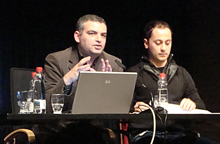
In March 30 the director of AGMI Hayk Demoyan gave a public lecture in Cankarjev dom, Ljubljana, Slovenia.
More than 100 locals and the representatives of the Armenian community in Ljubljana attended the event. The lecture was organized in the framework of the Armenian cultural days in Slovenia and was accompanied with photo presentation on the subject of the Armenian genocide.
The presentation of the book of Margarit Ajemyan-Ahnert “The knock at the door”
30.03.2010
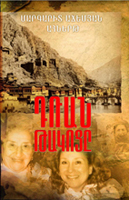
The presentation of the book of Margarit Ajemyan-Ahnert “ The knock at the door” took place in Armenian Genocide museum-institute's hall after Komitas.
The book is memories of the author's mother Ester Minerjyan, who was born in Amasia in 1900, (Sebastia province, of Western Armenia). She represents the 1915 disaster and its endless consequences. The book was published in English (2007), in USA and brought “Humanitarian Award” to the author.The writer of “The knock at the door” is also winner of the New York Book Fair in the nomination of “The best historical memoirs”.
Two rare original photos have been discovered by the Armenian Genocide Museum-Institute
24.03.2010

The unpublished photos show the panoramic view of Shushi - Armenian cultural center of Karabakh, after the 1920 massacre and destruction. The photos were taken from different points; in one of them the church of St. Amenaphrkich Ghazanchetsots surrounded by ruined houses and buildings with unique Armenian architecture is depicted and the second photo illustrates burned and ruined Armenian quarter of the city with Kanach Zham Church. These photos are unique documentation of the Armenian pogroms and horrific brutalities in Shushi took place in March of 1920.
His Holiness Kyrill I visited Tsitsernakaberd
17.03.2010

Today the delegation headed by Patriarch of Moscow and all Russia His Holiness Kyrill I accompanied by Supreme Patriarch and Catholicos of all Armenians Garegin II visited Tsitsernakaberd Memorial complex and laid a wreath at the monument of the Armenian genocide victims and gave a requiem liturgy. Afterwards the spiritual delegation took a tour in the Armenian Genocide Museum and Kyrill I left a note in the Commemoration Book, where he noted “Eternal memory of massacred innocent Armenian brothers and sisters. Let God preserve the Armenian land and people, and forbid any people the sufferings presented in this mournful memory place. His Holiness Kyrill I planted a fir at the Memorial Alley”.
The Polish delegation visited Tsitsernakaberd
12.03.2010

Today the delegation of the Republic of Poland headed by Prime Minister Donald Tusk visited Tsitsernakaberd Memorial complex and laid a wreath at the monument of the Armenian genocide victims. Afterwards the Polish delegation took a tour in the Armenian Genocide Museum and Donald Tusk left a note in the Commemoration Book, where he noted “I bend down before all the victims of the Genocide. Poland lost millions of its citizens in the past century and thoroughly understands the Armenian’s grief”. Donald Tusk planted a fir at the Memorial Alley.
The prominent filmmaker Emir Kusturitsa visited Tsitsernakaberd Memorial Complex
05.03.2010

Today the prominent filmmaker Emir Kusturitsa visited Tsitsernakaberd Memorial Complex. Filmmaker Emir Kusturitsa paid a tribute of respect to the victims of the Armenian genocide and put flowers at the memorial of the Armenian genocide. Afterwards Emir Kusturitsa planted a fir at the Memorial Alley. Emir Kusturitsa had a tour of the Armenian Genocide Museum, where he left a note in the Commemoration Book. Kusturitsa noted that “We became the victims of the same crime”. Emir Kusturitsa also interested in the first film about Armenian Genocide entitled “Ravished Armenia”, which demonstrates in the Museum.
Vice-chairman of the Chamber of Deputies Vojtech Filip visited Tsisernakaberd
04.03.2010

The Czech parliament delegation headed by vice-chairman of the Chamber of Deputies Vojtech Filip visited Tsisernakaberd memorial complex and laid a wreath at the monument of the Armenian genocide victims. Afterwards the Czech delegation took a tour in the Armenian Genocide Museum and Vojtech Filip left a note in the Commemoration Book.
The leader of the European People's party Wilfried Martens visited Tsisernakaberd
04.03.2010
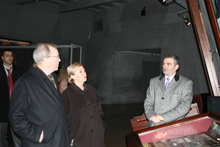
The delegation headed by the leader of the European People's party Wilfried Martens visited Tsisernakaberd memorial complex and laid a wreath at the monument of the Armenian genocide victims. Afterwards the delegation took a tour in the Armenian Genocide Museum and Wilfried Martens left a note in the Commemoration Book.
The presentation-discussion of the electronic version of the report of Jeffrey Robertson
03.03.2010

The presentation-discussion of the electronic version of the report of Jeffrey Robertson, entitled “Was there an Armenian genocide” took place in the Armenian Genocide Museum-Institute's hall after Komitas.
In 2007 the members of the Armenian community in London referred to a famous lawyer, an advisor of Queen, specialist in International legal issues relating to genocides Jeffrey Robertson, who presented his opinion in the separate report (2009, 3, November). Examining the documents of Ministry of Foreign Affairs and Ministry of Commonwealth, the famous lawyer reveals that the British Ministers, Parliament and people have been misguided for a long time and concludes “that the treatment of the Armenians in 1915 answers to the description of genocide”.
Donation to the AGMI from AGBU Young Professionals of Los Angeles
25.12.2009

Every year the collection of the Armenian Genocide Museum is enriched with new and unique materials that greatly promote the research on Armenian Genocide and organization of museum exhibition. Those materials are mostly obtained with the support and donations of friends of the AGMI.
Donation made by “AGBU Young Professionals of Los Angeles” to the Armenian Genocide Museum-Institute in 2009 enriched the museum collection with unique materials.
Young Turks and Holocaust at Adana
11.12.2009

AGMI reprinted the little known book by Ferriman Duckett titled The Young Turks and the Truth about the Holocaust at Adana in Asia Minor during April 1909, which for the first time was published in London in 1913. The book is a valuable source on the Armenian massacres in Adana in 1909, which heralded upcoming genocide organized by Ottoman Turks. This book is a detailed account of the horrible massacres organized by Turkish authorities with the mass participation of the Turkish population of the Adana district.
The refference to the bloody and violent events was titled as Holocaust, since many victims were burned alive. The city of Adana and surrounding Armenian towns and villages also were set to fire.
In the introduction of the book Ferriman Duckett wrote:
President of Latvia paid a tribute at Tsitsernakaberd
10.12.2009

President of the Republic of Latvia Valdis Zatlers and his spouse Mrs. Lilita Zatlers who are in Armenia by the invitation of the President of the Republic of Armenia Serzh Sargsyan, visited Tsitsernakaberd Memorial Complex of the Armenian genocide. The Latvian delegation paid a tribute to the victims of the Armenian genocide and put flowers at the genocide memorial. The delegation took a tour of the Armenian Genocide Museum, where Mr. Zatlers left a note in the Commemoration book: “Human memory cannot be obliterated, as it remains forever and passes from generation to generation”. Afterwards the President of Latvia planted a fir at the Memorial alley.
| 




